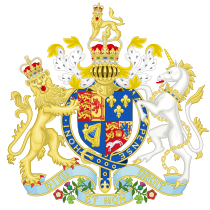The Militia Ordinance was passed by the Parliament of England on 15 March 1642. By asserting the right to appoint military commanders without the king’s approval, it was a significant step in the events leading to the outbreak of the First English Civil War in August that year.[1]
The 1641 Irish Rebellion had led to widespread support in England for the raising an army to suppress it.[2] But as relations between Charles I and parliament deteriorated, each side began to fear that such a force might be used against them.[3] After Charles was foiled in his efforts on 4 January 1642 to arrest the Five MembersFive members of parliament whom King Charles tried to have arrested in the House of Commons on 4 January 1642. of parliament whom he had accused of treason, the King left London the following day and headed north to York; over the next few weeks he was joined by many Royalist members of the Commons and House of Lords. The exodus resulted in a parliamentary majority in the Lords, which approved the Militia Ordinance on 5 March 1642, while confirming that doing so was not a violation of the Oath of Allegiance.[4]
The bill was returned to the Commons for approval the same day, then passed to Charles for his royal assent, required for it to become a legally binding Act of Parliament.[3] When he refused, parliament declared on 15 March 1642 that “the People are bound by the Ordinance for the Militia, though it has not received the Royal Assent”.[5] Charles responded to this unprecedented assertion of parliamentary sovereignty by issuing Commissions of Array, although these were little more than statements of intent, with little practical impact on the raising of armies.
Parliament continued to pass and enforce Ordinances throughout the 1640s, most of which were declared void after the 1660 Restoration of the Monarchy; an exception was the 1643 excise duty.[6]
This article may contain text from Wikipedia, released under the Creative Commons Attribution-ShareAlike 4.0 International License.

